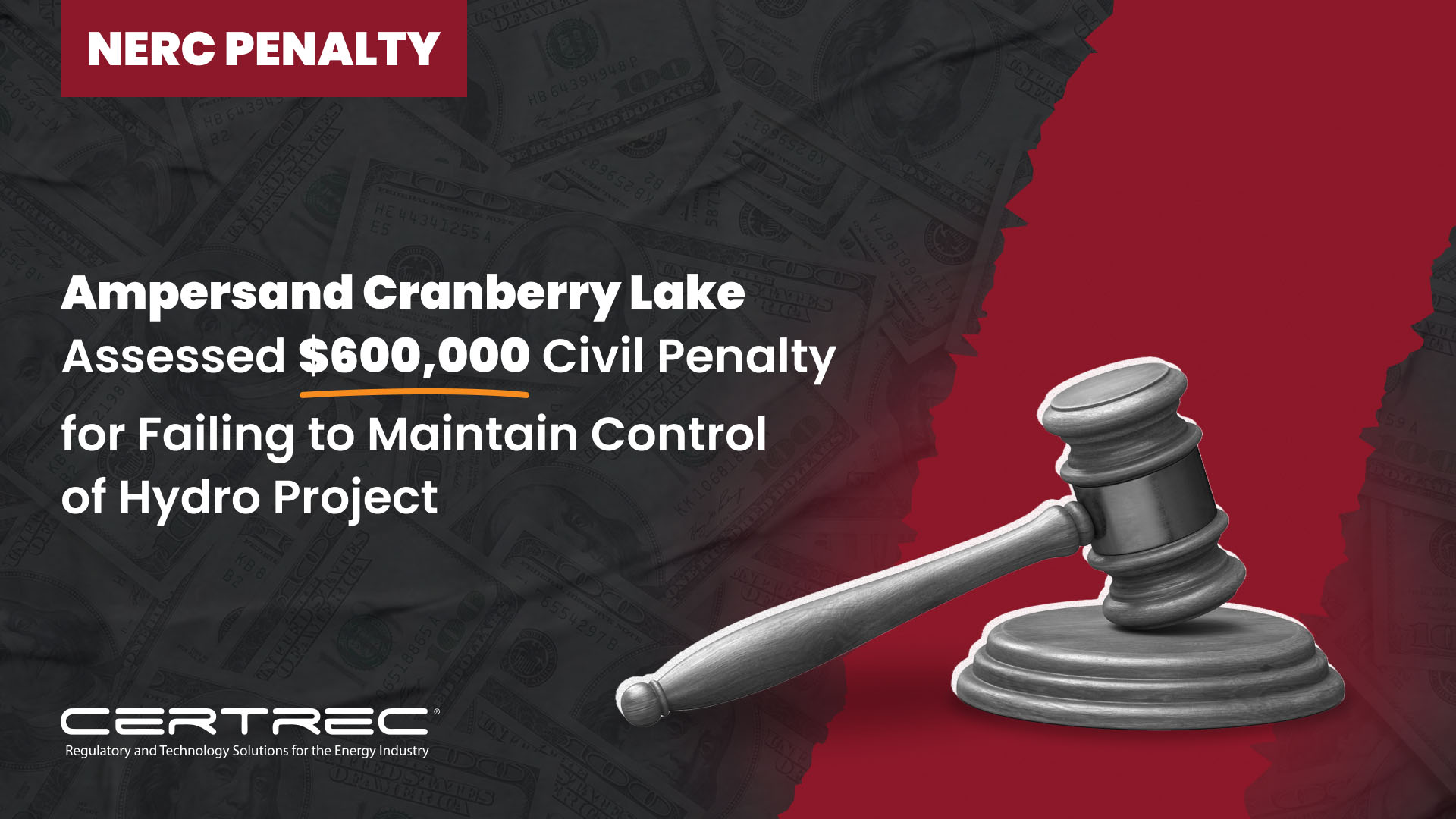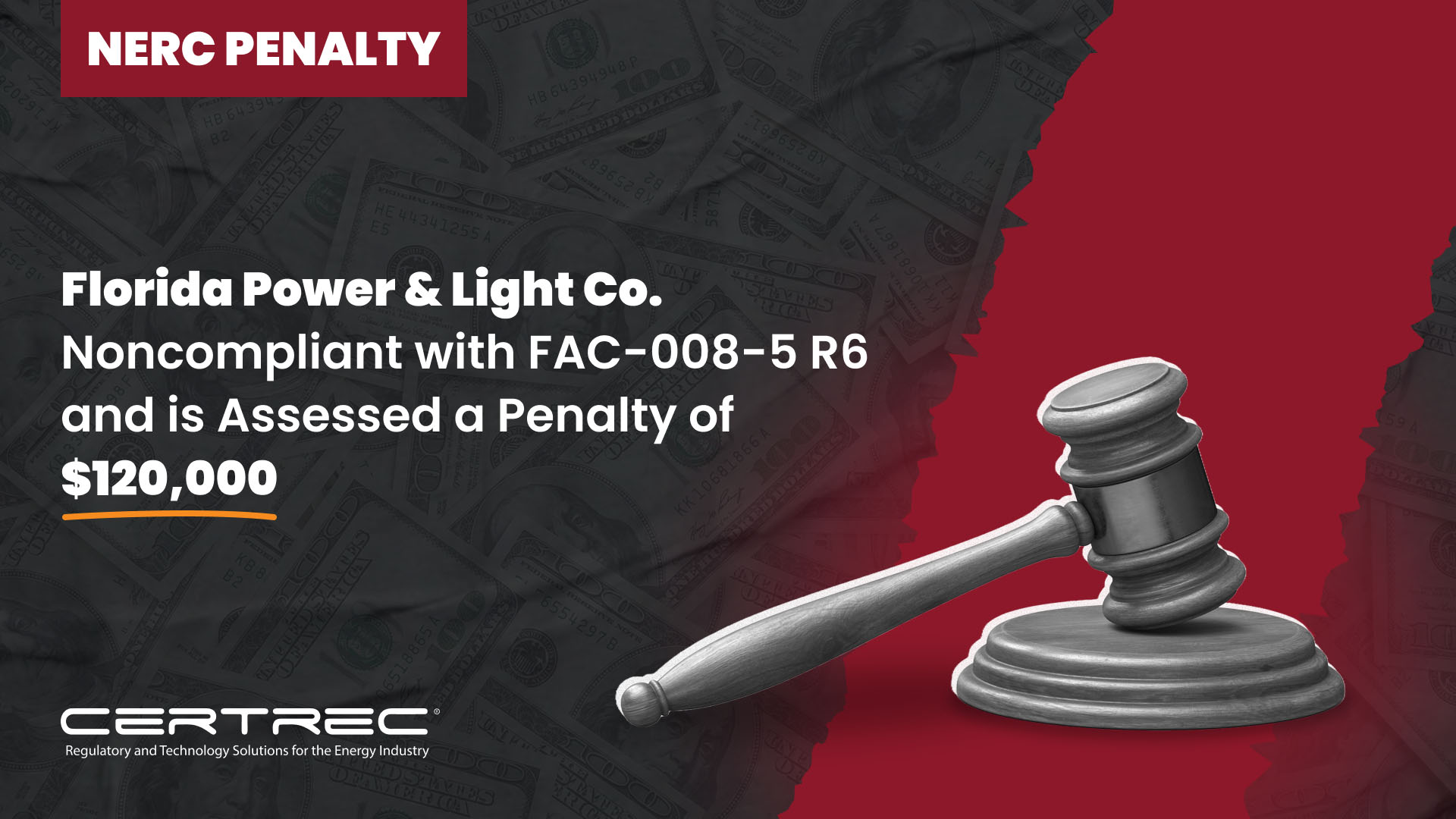National Grid Self-reported FAC-008-3 and PRC-023-4 Violations Result in $512,000 Penalty
Summary of NERC Penalties
REGION | WHEN? | ENTITY | REASON | VIOLATIONS
| COMPLIANCE AREA | PENALTY AMOUNT
|
|---|---|---|---|---|---|---|
NERC
| Quarter 1 10/04/2022 | National Grid | Ineffective interdepartmental coordination | Facilities Design, Connections, and Maintenance (FAC) Standard Protection and Control (PRC) Standard
| FAC‐008‐3 R6, R8 and PRC‐023‐4 | $512K |
FAC-008-3 R6
NPCC determined that the Entity did not maintain accurate Facility Ratings consistent with its Facility Ratings Methodology at Facilities used for the planning and operation of the Bulk Power System (BPS) by NGUSA in New York and New England. The Entity conducted an extent of condition review and discovered a total of 100 Facilities with incorrect and inconsistent Facility Ratings. More than 30% of the Facilities had incorrect ratings for all six applicable ratings (Normal, Long Term Emergency (LTE), Short Term Emergency (STE) for summer and winter). Ratings reductions ranged from less than 4% to 70%, and affected 21 Facilities. In addition, thirteen Facilities were associated with an Interconnection Reliability Operating Limit (IROL), with two requiring rating decreases and 11 requiring rating increases. Further, during the past three years, five circuits experienced loadings in real‐time operations that exceeded the previous incorrect Facility Ratings, and the largest overload exceeded the STE rating for both the incorrect and correct Facility Rating.
Cause
The cause of this violation was ineffective interdepartmental coordination or silos between departments, and contributing causes included insufficient communication, gaps in procedures, insufficient training, and lack of controls. NPCC determined that this violation posed a serious or substantial risk to the reliability of the BPS.
FAC‐008‐3 R8
NPCC determined that the Entity did not provide to its Reliability Coordinator accurate Facility Ratings or the accurate identity of the most limiting element of the Facility for a total of 154 Facilities (or 21% of the Entity’s Facilities in scope of the Standard). Of the 154 Facilities, 100 Facilities were included in the violation of R6 but had either correct MLEs and incorrect Facility Ratings, or both incorrect MLEs and Facility Ratings. One‐third of the Facilities had incorrect MLEs but correct Facility Ratings. In addition, several Facilities had correct MLEs and Facility Ratings, but lacked clear MLE identifiers.
Cause
The cause of this violation was ineffective interdepartmental coordination or silos between departments, and contributing causes included insufficient communication, a failure to identify or understand roles and responsibilities, gaps in procedures, insufficient training, and lack of controls. NPCC determined that this violation posed a serious or substantial risk to the reliability of the BPS.
PRC‐023‐4 R1
NPCC determined that the Entity had 16 protective relay settings affecting 13 transmission lines, seven of which were 345 kV feeders and eight were part of an IROL, which did not meet various Criteria specified in PRC‐023‐4 R1. Collectively, the noncompliant relays reduced the Winter Long Term Emergency (LTE) rating of the affected feeders by over 7,500 MVA. Attachment 1 includes additional facts regarding the violation.
Cause
The cause of this violation was ineffective interdepartmental coordination or silos between departments, and contributing causes included insufficient communication, gaps in procedures, insufficient training, and failure to recognize the loadability impact of limiting transformers installed in series with applicable feeders on protection relays’ settings. NPCC determined that this violation posed a moderate and not serious or substantial risk to the reliability of the BPS.
Regional Entity’s Basis for Penalty
NPCC has assessed a penalty of $512,000 for the referenced violations. In reaching this determination, NPCC considered the following factors:
1. The violations of FAC‐008‐3 posed a serious or substantial risk, and the violation of PRC‐023‐04 posed a moderate risk to the reliability of the BPS, as discussed in Attachment 1;
2. NPCC determined the compliance history for the FAC‐008‐3 violations should not serve as an aggravating factor. The FAC‐008‐3 violations were both based on the same facts and circumstances, and had the same root cause;
4. The Entity self‐reported the violations;
5. The Entity was cooperative throughout the compliance enforcement process; and
6. There were no other mitigating or aggravating factors or extenuating circumstances that would affect the assessed penalty/disposition method. After consideration of the above factors, NPCC determined that, in this instance, the penalty amount of $512,000.
About Certrec:
Certrec is a leading provider of regulatory compliance solutions for the energy industry with the mission of helping ensure a stable, reliable, bulk electric supply. Since 1988, Certrec’s SaaS applications and consulting expertise have helped hundreds of power-generating facilities manage their regulatory compliance and reduce their risks.
Certrec’s engineers and business teams bring a cumulative 1,500 years of working experience in regulatory areas of compliance, engineering, and operations, including nuclear, fossil, solar, wind facilities, and other Registered Entities generation and transmission.
Certrec has helped more than 200 generating facilities establish and maintain NERC Compliance Programs. We manage the entire NERC compliance program for 80+ registered entities in the US, Canada, and Mexico that trust us to decrease their regulatory and reputational risk. Certrec is ISO/IEC 27001:2013 certified and has successfully completed annual SOC 2 Type 2 examinations.
For press and media inquiries, please contact marketing@certrec.com.
Share








